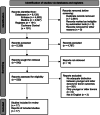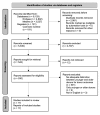Older living liver donors can enlarge the donor pool: a systematic review and meta-analysis
- PMID: 38573086
- PMCID: PMC11325888
- DOI: 10.1097/JS9.0000000000001419
Older living liver donors can enlarge the donor pool: a systematic review and meta-analysis
Abstract
Background: Living donor liver transplantation (LDLT) is the best option for end-stage liver disease patients. Older potential donors are increasingly requesting donation. This study aims to systematically assess the differences in donor perioperative and postoperative complications, mortality, and quality of life (QoL) between younger and older living liver donors.
Materials and methods: Embase, Medline, and Cochrane were searched for studies published between 2002 and 2 June 2023. Donor complications, major complications, biliary complications, mortality, and QoL were systematically reviewed, including meta-analyses. Donors aged >50 years were considered older. The methodological quality of the studies was assessed using the Newcastle-Ottawa quality assessment Scale.
Results: The search yielded 8320 studies, of which 17 were included. The risk ratio (RR) for complications in younger donors was 1.08 [0.90-1.31] ( P =0.41). RRs for major complications in younger donors were 0.98 [0.64, 1.48] and 0.89 [0.50, 1.57] using Clavien-Dindo ≥III and ≥IIIb as major complication. RR for biliary complications in younger donors was 1.59 [1.05-2.42] ( P =0.03). Mortality rate in younger donors was 47/13 238 (0.4%) and in older donors 13/989 (1.3%). Physical component summary (PCS) in younger donors was 51.87 and in older donors 51.29. Mental component summary (MCS) in younger donors was 52.93 and in older donors 55.40.
Conclusion: Older donors do not have a higher complication or mortality rate than younger donors after LDLT. They may have a lower rate of biliary complications. Additionally, older donors have a similar QoL after LDLT. With careful selection, older donors can be included in screening programs for living liver donation to expand the donor pool.
Copyright © 2024 The Author(s). Published by Wolters Kluwer Health, Inc.
Conflict of interest statement
The authors declare that they have no conflicts of interest.
Figures






References
-
- Tran L, Humar A. Current status of adult liver transplantation: utilization of living donor versus deceased donor graft. Curr Opin Organ Transplant 2021;26:133–138. - PubMed
-
- Manas D, Burnapp L, Andrews PA. Summary of the British Transplantation Society UK Guidelines for living donor liver transplantation. Transplantation 2016;100:1184–1190. - PubMed
-
- Kim S, Kim K, Cho H. Donor safety of remnant liver volumes of less than 30% in living donor liver transplantation: a systematic review and meta-analysis. Clin Transplant 2023;37:e15080. - PubMed
-
- Fan ST, Lo CM, Liu CL, et al. . Safety of donors in live donor liver transplantation using right lobe grafts. Arch Surg 2000;135:336–340. - PubMed
Publication types
MeSH terms
LinkOut - more resources
Full Text Sources
Medical

